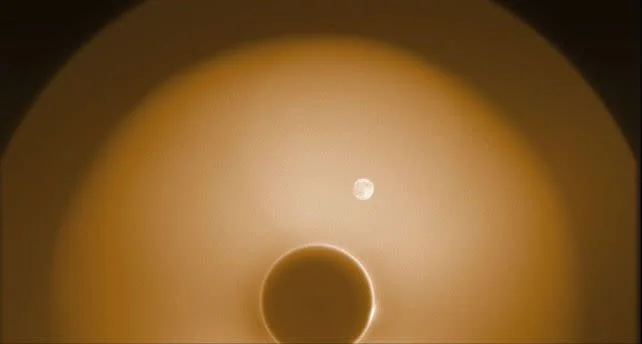
NASA’s PUNCH Mission Unveils Eerie, Stunning First Images of the Sun and Moon
NASA's new PUNCH (Polarimeter to Unify the Corona and Heliosphere) mission is already capturing breathtaking images of our solar system. Launched on March 11, 2025, PUNCH, comprised of four small satellites, is designed to study how the Sun's corona transitions into the solar wind. The mission's early images, revealed recently, showcase an eerie yet fascinating perspective of the Sun, Moon, and surrounding space.
One of the most striking images comes from PUNCH's Narrow Field Imager (NFI). This instrument uses an occulter to block out the Sun's disk, allowing it to capture intricate details of the solar atmosphere. The resulting image shows a bright ring of diffracted light around the occulter, within which floats the New Moon, illuminated by Earth's reflected sunlight. The effect is both surreal and scientifically valuable.

The Wide-Field Imagers (WFIs) also provide spectacular views. They capture constellations and star clusters, with the Pleiades prominently featured. One image from WFI-2 boasts a rainbow-tinted view of the stars, revealing information about the polarization of light scattering off interplanetary dust. This zodiacal light, typically seen as a faint glow in dark night skies, is vividly rendered in PUNCH's images.

These early images aren't just visually stunning; they confirm that all of PUNCH's instruments are functioning correctly. Calibration is now underway, and the mission is poised to begin its primary science work, studying the solar wind and its interaction with the solar system.
According to NASA, the data collected will be vital in understanding how the Sun generates the solar wind, which shapes the Solar System's bubble in the Milky Way galaxy. By understanding the behavior of the solar wind, we can better prepare for events, such as geomagnetic storms, that can disrupt power grids, radio communications, and satellites on Earth.
PUNCH is also uniquely positioned to complement the work of the Parker Solar Probe (PSP). As Craig DeForest, PUNCH's principal investigator, notes, PSP and PUNCH are uniting two branches of heliophysics: “PSP is carrying the techniques of space physics… inward to touch and measure the solar corona. PUNCH is extending the techniques of solar physics… outward to measure how the solar corona touches us.”
Commissioning for the PUNCH mission comes to a close on June 9, and data procured by the mission will be made available for anyone to use.
These first glimpses from PUNCH offer a tantalizing preview of the insights to come. What do you think these new images will reveal about the Sun's influence on our solar system? Share your thoughts in the comments below!